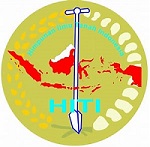PENGARUH PEMBERIAN PUPUK UREA TERHADAP PERTUMBUHAN TANAMAN BAYAM (Amaranthus tricolor L) PADA TANAH SAWAH DI DESA RANOKETANG ATAS
DOI:
https://doi.org/10.35791/se.22.1.2022.38912Keywords:
Pupuk Urea, Urea fertilizer, Tanaman Bayam, Spinach Plants, Tanah SawahAbstract
THE EFFECT OF UREA FERTILIZER ON THE GROWTH OF SPINACH (Amaranthus Tricolor L.) in RICE SOILS IN RANOKETANG ATAS VILLAGE
This study aims to determine the effect of urea fertilizer on the growth of spinach plants in rice soils. This research was conducted in Ranoketang Atas Village, Touluaan District, Southeast Minahasa Regency. This experiment used a completely randomized design (CRD) consisting of one factor with 4 treatments of urea fertilizer doses and repeated 3 times, so there were 12 total trials. The treatment given was a dose of urea fertilizer, which consisted of 4 treatments, namely, P0= Control, P1= 100kg Urea/ha, P2= 200kg Urea/ha and P3= 300 kg Urea/ha. Observed variables included plant height, number of leaves and plant fresh weight. The data obtained were analyzed using analysis of variance with Completely Randomized Design (CRD) if there was a significant (significant) difference, it would be continued with the smallest significant difference test (BNT) at 5% level. The effect of urea fertilizer on the growth of spinach plants did not significantly affect this treatment based on the results of analysis of variance but in the treatment of urea fertilizer there was an increase in plant growth. Spinach plant height growth had the highest value in the P2 treatment (200 Kg/ha) after P0 (control). The highest number of leaves was found at P0 (control) after that in the treatment of P2 fertilizer (200 Kg/ha). And the good fresh weight of spinach plants was found in the P2 treatment (200 Kg/ha).
Downloads
How to Cite
Issue
Section
License
Authors who publish in this journal agree to the following terms:
Authors hold their copyright and grant this journal the privilege of first publication, with the work simultaneously licensed under a Creative Commons Attribution License that permits others to impart the work with an acknowledgment of the work's origin and initial publication by this journal.
Authors can enter into separate or additional contractual arrangements for the non-exclusive distribution of the journal's published version of the work (for example, post it to an institutional repository or publish it in a book), with an acknowledgment of its underlying publication in this journal.
Authors are permitted and encouraged to post their work online (for example, in institutional repositories or on their website) as it can lead to productive exchanges, as well as earlier and greater citation of the published work (See The Effect of Open Access).




